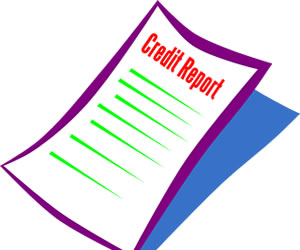Credit Score Stats and Ranges
Understanding credit score stats can help you put your own rating into perspective. The first thing you need to realize is that it is possible to have more than one score. Each reporting bureau calculates your score individually, and your number may vary due to differences in your credit history at each bureau.
Credit Score Ranges for the Main Credit Bureaus
Also, while scores generally range from 300 to 850, there are slight variations in the range, depending on which agency is reporting the information. Plus, each of the credit bureaus has their own model for calculating credit scores. The two main credit scoring models are the Fico Score and the Vantage Score. For example, here are the ranges for each bureau:
TransUnion: 350-850
Experian: 360-840
Equifax: 280-850
For the same person, there will be some variation in credit scores between the credit bureaus because information from creditors is not reported to all the bureaus.
Credit Score Distribution Among the General Population
Based on the general population's FICO® scores (according to Experian's Consumer Credit Review), the percentage of the population scoring in each range is as follows:
20% are in the "Exceptional" range above 800
25% are in the "Very Good" range of 740 - 799
21% are in the "Good" range of 670 - 739
18% are in the "Fair" range of 580 - 669
16% are in the "Very Poor" range of 300 - 579
For a more thorough breakdown, in 2019 Fair Isaac reported the following percentages:
- Up to 499 - 4.3%
- 500 - 549 - 6.8%
- 550 - 599 - 7.8%
- 600 - 649 - 9.3%
- 650 - 699 - 12.5%
- 700 - 749 - 16.2%
- 751 - 799 - 20.7%
- Over 800 - 22.3%
What is the average American credit score?
According to Experian's State of Credit Survey, the average American credit score climbed to 703 (as of 9/2019). During this period, the North East (Maine, New Hampshire, Vermont, Massachusetts, Rhode Island, and Connecticut) had the highest score average, and the Southwest and Southeast states (Texas, New Mexico, Oklahoma, Arkansas, Mississippi, and Louisiana) had the lowest average scores. As for individual states, Minnesota had the highest average of 733, while Mississippi had the lowest average of 667.
Interpreting Credit Scores
Given the current credit score stats, how does this relate to your own personal score? Generally, if your score is higher than 700, you will be considered a good credit risk. If your score is below 700, then you might have a tougher time getting a loan. The following ratings explain the impact of the different score ranges:
- Over 800 - Exceptional - This qualifies a person for the best financing terms.
- 740-799 - Very Good - Qualifies a person for favorable financing.
- 670-739 - Average - A score in this range will usually qualify for most loans.
- 580-669 - Fair - May still qualify, but will pay higher interest.
- Under 579 - Poor - Will have trouble obtaining a loan.
Interest rates generally rise along with a lenders risk factor. Overall, people with the highest credit scores receive the best financing, while those that fall below the average will generally only qualify for sub-prime loans with higher interest rates. In fact, the mortgage interest rate for people scoring in the average range is generally 1.5 point higher than the rates for those at the top of the scale. To get the best interest rates, your score should be 740 or above.
Credit Score Needed to Buy A House
It is not impossible to obtain a mortgage with an imperfect credit rating, and you may even be able to qualify with a score as low as 500. In fact, some lenders specialize in sub-prime loans (for scores below 620), even though it means higher down payments and interest rates for the borrower.
On the other end of the spectrum are scores over 800, which means a person has excellent credit and will probably receive the best financing terms. For scores in between 620 to 739, most people will qualify for financing, but will probably have higher fees and rates.
Because interest rates are determined in part by your score, it's important to know where you stand before you ever begin the loan process. MyFICO has a really neat application that lets you see the possible interest rates, based on your state, credit score, and loan amount. It also shows you how much you could save in interest based on improvements to your score.
While these credit score stats can give you can indication of what to expect, you need to understand that each lender has their own range of acceptable scores. Lenders also consider other factors, such as your employment, savings, and income-to-debt ratio when making decisions on whether to lend you money or not. Therefore, you should find out what your lender's requirements are before you apply for a loan.
Updated February 1, 2020

